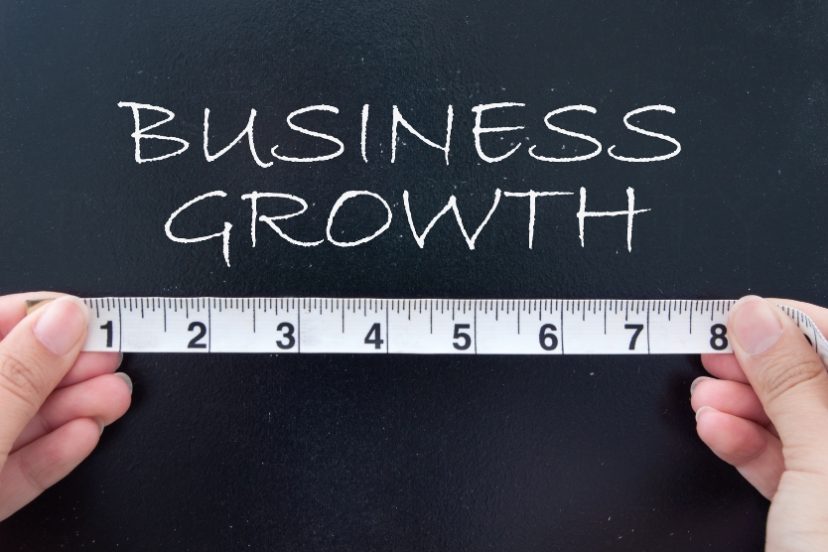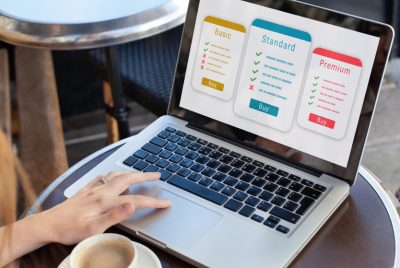Artificial intelligence is not coming—it’s already here. And it’s rewriting the rules of business faster than…
10 Reasons Increasing Customer Purchases Drives Business Growth

For entrepreneurs, building and scaling a business is not just about gaining new customers — it’s about maximizing the potential of the customers you already have.
While acquiring new leads is important, the real secret to sustainable growth often lies in encouraging existing customers to purchase more products or services.
This concept, commonly referred to as customer expansion or cross-selling, isn’t just a strategy reserved for large corporations; it’s a game-changer for startups and small businesses looking to establish a strong foothold in their market.
Understanding how to tap into the full potential of your customer base can lead to significant revenue growth, improved customer loyalty, and the ability to reinvest in the future of your business.
Are you ready to discover why getting your customers to buy more is a smart strategy for growth and how you can apply it to your business today?
Let’s explore 10 powerful reasons why this approach can fundamentally transform your business and accelerate your entrepreneurial success.
Keep reading to unlock valuable insights that can make a measurable impact on your business growth!
1)) Increased Revenue
Increased revenue is a pivotal driver of business growth because when customers purchase more products and services, it directly contributes to a company’s financial health and stability.
Higher revenue streams enable businesses to reinvest in their operations, whether by enhancing product quality, expanding their market reach, or improving customer service.
This capital increase also allows for innovation, as businesses can allocate funds toward research and development, creating new offerings that attract even more customers.
As revenue grows, businesses gain the flexibility to hire skilled employees, upgrade technology, and refine processes, all of which collectively boost efficiency and competitiveness.
Consistent revenue growth not only sustains a business’s current operations but also sets the stage for long-term success and scalability.
2)) Higher Customer Loyalty
Higher customer loyalty is a critical factor driving business growth, as it fosters stronger relationships between the business and its customers.
When customers consistently purchase more products and services, it not only boosts revenue but also demonstrates trust in the brand.
Loyal customers are more likely to recommend the business to others, acting as advocates and creating valuable word-of-mouth marketing.
It is more cost-effective to retain existing customers than to acquire new ones, which contributes to overall profitability.
By understanding customer needs and delivering exceptional experiences, businesses can cultivate lasting loyalty that directly feeds into sustained growth and long-term success.
3)) Reduced Marketing Costs
When customers purchase more products or services from a business, it naturally leads to reduced marketing costs, which can significantly boost the company’s growth.
This happens because retaining an existing customer is far more cost-effective than acquiring a new one.
Loyal customers already trust the brand and require less persuasion or promotional effort to make repeat purchases.
Satisfied customers often become advocates, spreading positive word-of-mouth and introducing new potential clients to the business at no extra cost.
As a result, businesses can allocate fewer resources to advertising and outreach while still enjoying an expanding client base and increased revenue.
Over time, this cycle allows the company to reinvest savings into other areas, such as product innovation or customer service, fueling sustained growth and long-term success.
4)) Improved Brand Reputation
Improved brand reputation is a key driver of business growth because it fosters trust, loyalty, and repeat purchasing behavior among customers.
When a company establishes itself as reliable, ethical, and customer-focused, consumers are more likely to make additional purchases and recommend the brand to others, leading to organic growth.
A positive reputation also enables businesses to differentiate themselves in competitive markets, allowing them to attract new customers who value quality and credibility.
Furthermore, a strong brand reputation can justify premium pricing, as customers often associate reputable brands with superior products or services, increasing overall revenue.
This cycle of trust, satisfaction, and advocacy not only boosts sales but also positions the business for long-term sustainability and expansion.
5)) Better Cash Flow
When customers make frequent purchases or invest in a broader range of products or services from a business, it not only amplifies revenue but also improves cash flow stability.
Steady cash flow empowers the business to meet operational costs, reinvest in inventory, and upgrade technologies or infrastructure.
It allows the company to seize new opportunities, such as expanding into untapped markets or launching innovative product lines, without being hindered by financial restrictions.
Improved cash flow can reduce reliance on external borrowing, leading to fewer interest obligations and healthier financial standing.
Long-term, this cycle of consistent customer engagement and enhanced cash flow fosters sustainable growth, ensuring the business can thrive in a competitive marketplace.
6)) Enhanced Market Share
When customers purchase more products or services from a business, it directly contributes to an increase in market share, which is a critical indicator of business health and competitiveness.
A higher market share not only solidifies a company’s position in the industry but also creates opportunities for scaling operations, expanding into new territories, and investing in innovation.
Repeat customers often become brand advocates, bringing in new clientele through positive word-of-mouth and organic recommendations.
This virtuous cycle of increased demand, improved brand visibility, and loyal customer relationships ultimately accelerates the business’s overall growth, ensuring long-term success in a competitive environment.
7)) Cross-Selling Opportunities
Cross-selling opportunities play a pivotal role in driving business growth by maximizing the value obtained from each customer.
When a business successfully encourages customers to purchase additional products or services, it not only increases revenue but also deepens customer engagement and loyalty.
This strategic approach allows companies to offer tailored solutions that meet broader client needs, fostering a sense of trust and satisfaction.
Cross-selling often leads to higher customer lifetime value, as clients feel more connected to the brand through their expanded investment in its offerings.
Done effectively, this practice cultivates strong relationships, opens pathways for future innovations, and supports sustainable growth, making it a vital strategy in today’s competitive markets.
8)) Economies Of Scale
Economies of scale play a crucial role in enhancing business growth, particularly when customers choose to purchase more products or services from the same company.
By increasing the volume of production or sales, businesses can reduce their average costs per unit, as fixed costs like rent, utilities, and operational expenses are spread out over a larger output.
This, in turn, allows companies to operate more efficiently, offering competitive pricing or reinvesting the savings into further improvement of their products and services.
Higher customer demand can encourage businesses to optimize processes, innovate more actively, or negotiate better deals with suppliers, further amplifying growth potential.
This dynamic underscores the powerful relationship between customer purchasing activity and a business’s ability to scale sustainably and thrive in competitive markets.
9)) Competitive Advantage
A strong competitive advantage plays a pivotal role in driving a business’s growth when customers choose to purchase more products or services.
This is because a competitive advantage often reflects the business’s ability to deliver unique value, superior quality, or unmatched customer service, which fosters increased customer loyalty and satisfaction.
When customers consistently return and invest more in a company’s offerings, it generates higher revenue and creates opportunities for reinvestment into innovation, marketing, and operational improvements.
A loyal customer base can lead to organic growth through referrals and positive word-of-mouth, amplifying the business’s reach without significant additional costs.
Over time, this cycle of customer engagement and increased spending strengthens the business’s market position, allowing it to outpace competitors and thrive sustainably in a competitive environment.
10)) Greater Predictability
When a customer purchases more products or services from a business, it creates a sense of reliability and consistency in revenue streams, which plays a critical role in promoting growth.
This increased predictability enables businesses to forecast future sales with greater accuracy, which, in turn, supports more efficient financial planning and resource allocation.
Businesses can confidently invest in expanding operations, improving product quality, or enhancing customer service, knowing that a steady flow of income is likely to continue.
Such relationships foster customer loyalty, further solidifying a company’s market position and reducing volatility typically associated with uncertain sales patterns.
The stable and predictable framework created by increased customer engagement lays a strong foundation for sustainable growth over time.
Conclusion
The growth of any business is intrinsically tied to its ability to foster meaningful relationships with its customers and encourage repeat purchases across a variety of products and services.
When customers purchase more from the same business, it signifies increased trust, satisfaction, and loyalty—factors that directly fuel sustainable growth.
By offering diverse, high-quality products or services, businesses can meet evolving customer needs, drive brand advocacy, and create a competitive edge in their market.
This multiplication of value not only strengthens revenue streams but also optimizes operational efficiency, as retaining existing customers is far more cost-effective than acquiring new ones.
Beyond financial growth, customer expansion within a business enhances brand identity and establishes a community of long-term supporters who effectively act as ambassadors.
These loyal customers are more likely to spread positive word-of-mouth and generate referral sales, amplifying growth with minimal additional investment.
By consistently exceeding expectations and anticipating customer preferences, businesses can spark an ongoing cycle of trust, value, and growth.
When customers repeatedly choose a company’s offerings, it not only reinforces the success of current efforts but also sets the stage for enduring and scalable success in the future.





